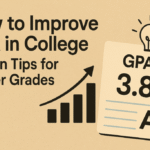Every student has been there: staring at a blank page with a looming deadline, wondering why their carefully crafted assignment received a disappointing grade. While academic writing can seem mysterious, most failures stem from a handful of common mistakes that plague students across all disciplines. Understanding these pitfalls—and learning how to avoid them—can transform your academic performance.
Sin #1: The Vague Thesis Statement

The most fundamental error in assignment writing is burying your main argument under layers of generalization. A weak thesis statement like “Shakespeare’s plays are interesting because they deal with human nature” tells your reader nothing specific about your perspective or what you plan to prove.
The Expert Approach: Craft a precise, arguable thesis that makes a clear claim. Instead of the vague example above, try: “In Hamlet, Shakespeare uses the protagonist’s feigned madness to expose the moral corruption lurking beneath the Danish court’s civilized facade.” This statement is specific, debatable, and provides a roadmap for your entire essay.
Expert writers spend significant time refining their thesis statements, often revising them multiple times as their understanding of the topic deepens. They know that a strong thesis acts as both anchor and compass for the entire piece.
Sin #2: Inadequate Research and Poor Source Selection
Many students approach research like a treasure hunt, grabbing whatever sources seem remotely relevant without evaluating their credibility or relevance. This shotgun approach often results in arguments supported by unreliable sources or evidence that doesn’t actually support the central claim.
The Expert Approach: Develop a systematic research strategy that prioritizes quality over quantity. Start with reputable academic databases, peer-reviewed journals, and established scholarly sources. When evaluating sources, consider the author’s credentials, publication date, and the source’s reputation within the academic community.
Professional writers also practice “source triangulation”—finding multiple credible sources that support key points. They read beyond abstracts and summaries, engaging deeply with their sources to understand not just what they say, but how they fit into the broader scholarly conversation.
Sin #3: Weak Structure and Poor Organization
The dreaded “stream of consciousness” essay reflects perhaps the most common structural failing in student writing. These assignments jump between ideas without clear connections, leaving readers lost and frustrated. Poor organization signals to instructors that the writer hasn’t fully grasped their own argument.
The Expert Approach: Create a detailed outline before writing a single paragraph. Each section should serve a specific purpose in advancing your overall argument. Use topic sentences that clearly connect each paragraph to your thesis, and employ transitional phrases that guide readers smoothly from one idea to the next.
Expert writers often use the “reverse outline” technique—after completing a draft, they summarize each paragraph in a few words to check whether the logical flow supports their argument. If paragraphs seem out of place or redundant, they reorganize accordingly.
Sin #4: Neglecting Analysis in Favor of Summary
Perhaps the most frustrating mistake for instructors to read is the assignment that simply summarizes existing information without adding any original insight. These papers demonstrate that students have consumed information but haven’t engaged critically with it.
The Expert Approach: Move beyond “what” to explore “how” and “why.” Instead of simply describing what happened or what sources say, analyze the significance of events, evaluate competing interpretations, and draw connections between different pieces of evidence.
Strong analytical writing asks probing questions: What assumptions underlie this argument? How does this evidence complicate our understanding? What are the broader implications of these findings? Expert writers position themselves as active participants in scholarly conversations rather than passive reporters of information.
Sin #5: Careless Editing and Proofreading
The final deadly sin is treating the first draft as the final product. Students who skip the revision process often submit assignments riddled with grammatical errors, unclear sentences, and logical inconsistencies that undermine their credibility.
The Expert Approach: Build multiple revision stages into your writing process. Start with big-picture concerns—does your argument make sense? Is your evidence convincing?—before moving to sentence-level editing for clarity and correctness.
Professional writers often read their work aloud to catch awkward phrasing and rhythm problems that might slip past silent reading. They also create “cooling off” periods between writing and editing, allowing fresh perspective to reveal weaknesses that weren’t apparent during composition.
The Path Forward
Avoiding these deadly sins requires both awareness and practice. Start by honestly evaluating your current writing process—which of these mistakes do you recognize in your own work? Then systematically address each weakness, perhaps focusing on one area per assignment until stronger habits become automatic.
Remember that expert writers weren’t born with superior skills. They developed their abilities through deliberate practice, careful attention to feedback, and willingness to revise their approaches when techniques weren’t working. The difference between struggling students and successful writers often comes down to process rather than innate talent.
Academic writing is ultimately about joining a community of scholars engaged in ongoing conversations about important questions. By avoiding these common pitfalls, you position yourself not just to earn better grades, but to contribute meaningfully to those discussions. The effort you invest in mastering these fundamentals will serve you well beyond the classroom, in whatever professional endeavors await.



